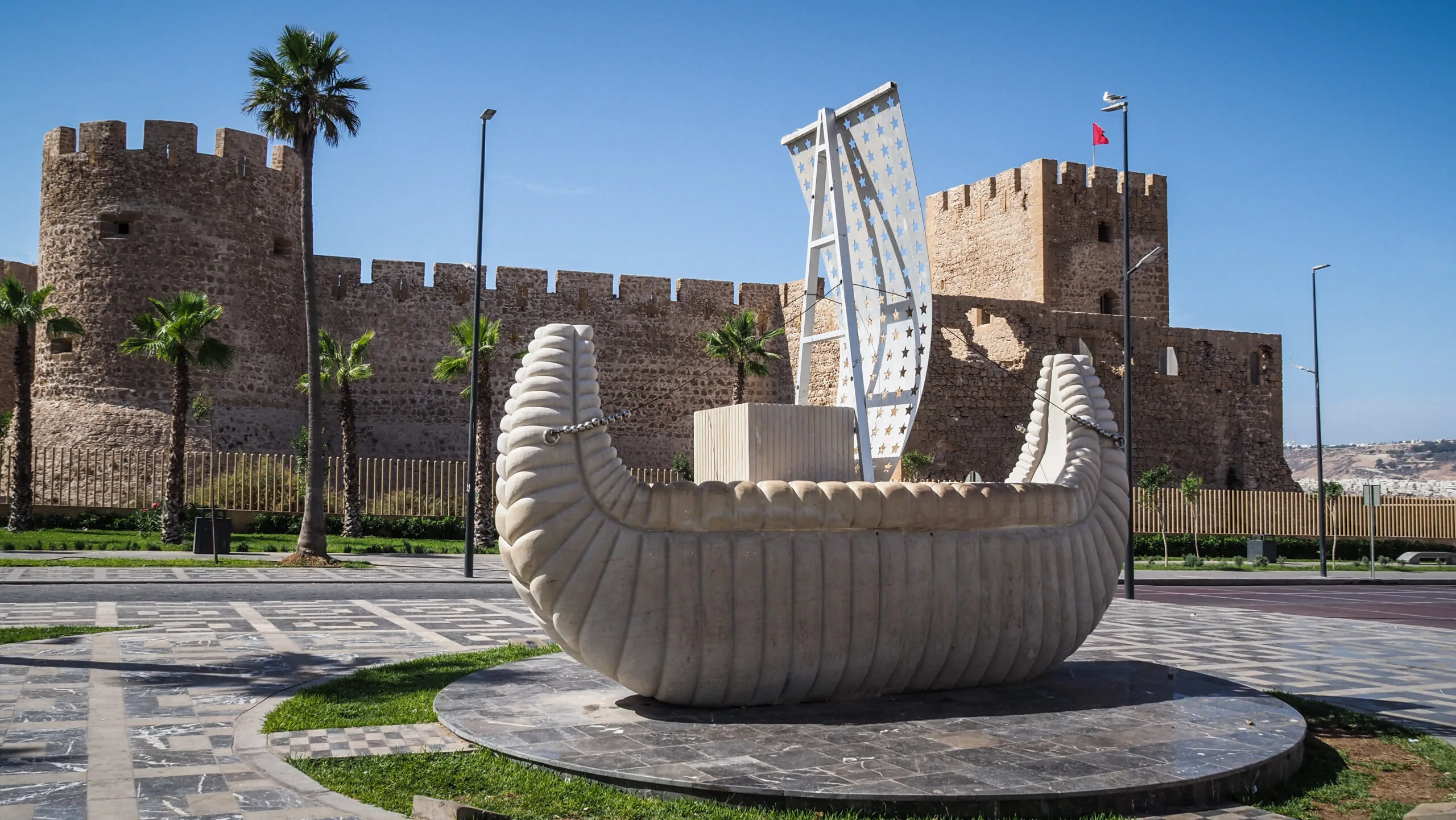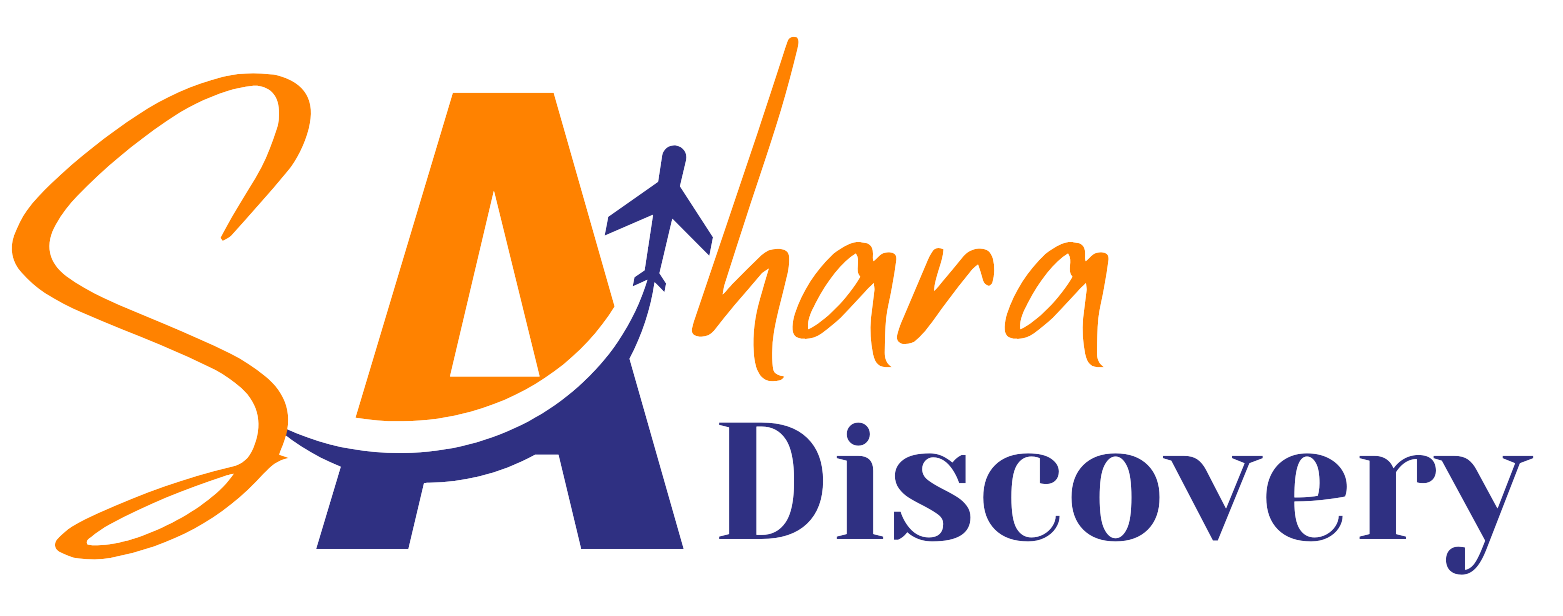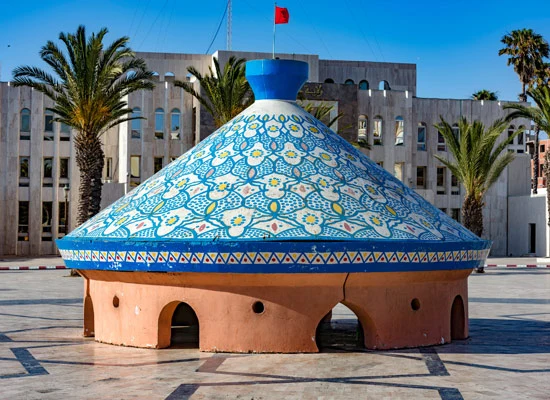Things to do in Safi: The Ultimate Guide to Morocco’s Pottery Capital
Morocco’s Atlantic coast holds many treasures, but few are as authentic and underappreciated as Safi. While tourists flock to Marrakech and Essaouira, those seeking a more genuine Moroccan experience should explore the many things to do in Safi a city where centuries old pottery traditions meet stunning Atlantic views and rich Portuguese colonial history.
As someone who’s spent weeks exploring Safi’s winding medina alleys, conversing with local artisans, and sampling the freshest sardines straight from the bustling port, I’ve created this comprehensive Safi travel guide to help you discover what to see in Safi beyond the surface-level attractions.
Unlike other guides, this one combines personal experiences with insights from local residents and thorough research to give you the most authentic visit Safi experience possible. From the ancient fortress overlooking the Atlantic to hidden pottery workshops where centuries-old techniques remain unchanged, this guide covers everything worth experiencing in this underrated Moroccan coastal gem.
Let’s dive into the essential things to do in Safi, with an interactive map included below to help you navigate this fascinating city with ease.
Historical Landmarks & Must-See Attractions
Kechla (Portuguese Fortress)
Perched dramatically on the clifftop overlooking the Atlantic Ocean, the imposing Kechla fortress stands as a testament to Safi’s strategic importance in the 16th century. Built by the Portuguese in 1508, this massive fortification features impressive ramparts, ancient cannons still pointing toward the sea, and breathtaking views of the harbor below.
Insider Tip: Visit just before sunset when the golden light bathes the yellowish stone walls, creating the perfect photography opportunity. The northwest corner offers the most spectacular panoramic view of the port and coastline.
Practical Info: Located at the western edge of the medina. Open daily 9:00 AM – 6:00 PM. Entry fee: 10 MAD (approximately $1).
Portuguese Cathedral Ruins
Hidden within the medina walls lie the atmospheric ruins of what was once the first Portuguese cathedral built on African soil. Dating back to the early 16th century, only fragments remain of this once-impressive Gothic structure, including several arched doorways and wall sections that hint at its former grandeur.
Insider Tip: Look for the small carving of a Portuguese cross near the main archway, it’s easy to miss but represents a fascinating cultural intersection.
Practical Info: Located in the old Portuguese quarter of the medina. Open during daylight hours. Free entry.
Dar Sultan Palace
This partially restored historical residence offers a glimpse into Safi’s past as an important administrative center. The palace’s distinctive architecture combines Moroccan and Portuguese influences, featuring intricate zellige tilework and carved wooden ceilings.
Insider Tip: The upper terrace provides unique views of both the medina and the Atlantic that few tourists ever see. Ask the caretaker about the palace’s connection to local pirate legends for a fascinating story.
Practical Info: Located in the northern section of the medina. Open Wednesday-Monday, 10:00 AM – 5:00 PM. Entry fee: 15 MAD (approximately $1.50).
The World-Famous Pottery Scene
Colline des Potiers (Potter’s Hill)
Safi’s most celebrated attraction is undoubtedly its pottery district, where the city’s reputation as Morocco’s pottery capital comes alive. Perched on a hillside overlooking the city, this collection of workshops continues traditions dating back to the 12th century. The district is characterized by its distinctive beehive-shaped kilns that dot the landscape.
The pottery process here follows ancient methods: clay is extracted from nearby quarries, shaped on foot-powered wheels, decorated with intricate patterns, and fired in those distinctive kilns. The most famous style is the blue pottery (pottery with cobalt blue designs) that has become synonymous with Safi craftsmanship.
Workshop Recommendations:
- Atelier Mohammed Serghini – A multi-generational family workshop where you can watch master potters create everything from tiny decorative pieces to massive ornate tagines. Mohammed welcomes visitors to try their hand at the pottery wheel.
- Cooperative Jafari – This women’s cooperative specializes in modern interpretations of traditional designs, offering more contemporary pieces that still honor Safi’s heritage.
Buying Tips: Quality pottery will have even glazing, symmetrical shapes, and detailed, careful decoration. Don’t be afraid to negotiate prices, but remember that quality craftsmanship deserves fair compensation. Authentic workshops will explain their processes and show you pieces in various stages of completion.
“What makes Safi pottery special isn’t just our techniques, which haven’t changed for centuries, but how we blend traditional patterns with the personality of each artisan. Every piece tells a story about our city’s heritage.” — Hassan Bourkadi, master potter for 35 years
National Ceramic Museum
Housed in an elegant colonial-era building, this small but informative museum displays the evolution of Safi pottery through the centuries. The collection includes both historical pieces and award-winning modern works by local master craftsmen.
Insider Tip: The rear garden contains examples of the traditional kilns with cutaway sections that show how they function—a fascinating glimpse into this ancient technology.
Practical Info: Located near the entrance to Potter’s Hill. Open Tuesday-Sunday, 9:00 AM – 4:30 PM. Entry fee: 20 MAD (approximately $2).
Exploring the Medina & Local Life

Safi’s medina lacks the polish of Fez or Marrakech, but this authenticity is precisely its charm. Here, locals still outnumber tourists, and daily life unfolds largely unchanged by outside influence.
Self-Guided Walking Tour
Start at Bab Chaaba gate and follow these highlights:
- Souq El Ghzal (Wool Market) – Unlike tourist-oriented markets, this is where locals shop for fabrics and traditional clothing. The colorful textiles make for gorgeous photos.
- Spice Quarter – Follow your nose to the aromatic spice vendors along Rue des Épices. Ask for “ras el hanout” spice mix variations specific to the Safi region.
- Rue des Bijoutiers – This narrow lane houses several traditional silversmiths creating Berber-influenced jewelry. Watch artisans at work through open doorways.
- Place de l’Indépendance – The medina’s main square comes alive in late afternoon when locals gather at the cafés. Order mint tea and watch daily life unfold.
Insider Tip: Thursday mornings bring the weekly market where rural families come to sell produce, home-crafted goods, and medicinal herbs not found in everyday shops.
Local Life Experiences
- Join the evening promenade along Avenue Mohammed V when families stroll, socialize, and enjoy street food after the day’s heat subsides.
- Visit the Municipal Market early morning (7:00-9:00 AM) to see fishermen bringing their fresh catch directly to market stalls.
Coastal Charm & Activities
Safi Port & Fish Market
One of Morocco’s busiest fishing ports, Safi’s harbor offers a fascinating glimpse into the country’s maritime economy. The port handles everything from tiny fishing boats to large commercial vessels, but it’s most famous for its sardine catches.
Experience: Wake up early (around 6:00 AM) to watch the fishing fleet return and the frenetic auction process at the fish market. The chaotic energy and centuries-old trading rituals make for an unforgettable cultural experience.
Seafood Restaurants:
- Restaurant du Port – Located directly overlooking the harbor, this no-frills eatery serves the morning’s catch prepared simply and perfectly. Their sardine tagine is a local specialty found nowhere else.
- La Grillardière – Slightly more upscale but still authentic, offering excellent grilled fish and seafood platters. Their seafood bastilla (seafood in crispy pastry) represents a perfect fusion of Safi’s fishing and culinary traditions.
Lalla Fatna Beach
Located just north of the city center, this wide sandy beach offers a more relaxed atmosphere than the working port area. Popular with local families, it’s perfect for sunbathing or taking leisurely walks along the shoreline.
Insider Tip: Visit in late afternoon when local teenagers often gather for impromptu soccer matches and families bring picnics to enjoy the sunset.
Surfing Spots
While less known than Morocco’s famous surf destinations, Safi offers several good breaks for intermediate to experienced surfers:
- Safi Point – A right-hand point break that works best during winter swells.
- R’bat Beach (15km north) – Less crowded with more consistent conditions for beginners.
Unique Cultural Experiences
Pottery Workshop Experience
Several studios on Potter’s Hill offer half-day workshops where visitors can learn basic techniques from master potters. The experience includes clay preparation, wheel work, and decoration techniques. Your creation will be fired and can be shipped to your home country.
Recommended: Atelier Tamounte offers the most comprehensive experience, including traditional Moroccan lunch with a potter’s family. Reservations required at least one day in advance.
Sahara Discovery Excursions
Safi serves as an excellent starting point for exploring Morocco’s diverse landscapes, thanks to locally-based Sahara Discovery. This reputable Moroccan travel company specializes in curated experiences connecting coastal Safi with inland wonders.
Day Trips from Safi:
- Essaouira Journey – A full-day coastal exploration visiting the famous port city known for its blue boats and Game of Thrones filming locations.
- Oualidia Lagoon Experience – Discover this hidden paradise just 85km north of Safi, famous for its oyster farms and protected bird sanctuary.
Multi-Day Adventures:
- Sahara Under Stars – Their signature 3-day journey takes you from Safi through the Atlas Mountains to camp under the stars in the Sahara Desert.
- Cultural Heritage Trail – A 2-day excursion connecting Safi’s pottery traditions with the artisanal heritage of inland communities.
Sahara Discovery stands out for employing local guides from each region visited and maintaining small group sizes (maximum 8 travelers). Their office near Place de l’Indépendance offers free consultations for customizing itineraries based on your interests and schedule.
Sardine Festival (July)
If you’re lucky enough to visit during July, don’t miss Safi’s lively Sardine Festival. This three-day celebration includes cooking competitions, music performances, and cultural exhibitions all centered around the humble sardine that built Safi’s economy.
Traditional Hammam
Experience a truly local cultural tradition at Hammam Baraka in the heart of the medina. This traditional bathhouse sees few tourists but offers an authentic glimpse into Moroccan wellness culture. Women-only mornings, men-only afternoons.
Foodie Delights in Safi
Beyond its famous sardines, Safi offers several culinary experiences worth seeking out:
Must-Try Local Specialties
- Sardine Tagine with Chermoula – The city’s signature dish combines fresh sardines with a marinade of cilantro, garlic, cumin, and preserved lemon.
- Doubara – A hearty bean soup seasoned with cumin and olive oil, popular for breakfast among port workers.
- Safi Bread Rings – Similar to bagels but with distinctive anise flavoring, found at morning street vendors.
Recommended Eating Spots
- Café des Potiers – Overlooking Potter’s Hill, this café serves excellent traditional meals in a setting decorated with local ceramics. Their chicken tagine with preserved lemons and olives is outstanding.
- Patisserie Driss – The city’s finest pastry shop combines French techniques with Moroccan flavors. Try their almond-orange cake or date-filled cookies.
- Terrasse de la Mer – For sunset dining with ocean views, this rooftop restaurant offers fresh seafood and traditional Moroccan dishes.
Practical Planning Section
Getting to Safi
| From | Transport Option | Duration | Approximate Cost |
|---|---|---|---|
| Marrakech | CTM Bus | 3.5 hours | 80 MAD ($8) |
| Marrakech | Grand Taxi | 2.5 hours | 150 MAD ($15) per seat |
| Essaouira | CTM Bus | 2 hours | 60 MAD ($6) |
| Casablanca | Train to Safi | 4 hours | 100 MAD ($10) |
Getting Around Safi
- Walking – The medina and major attractions are compact enough to explore on foot.
- Petit Taxis – Abundant and inexpensive. Short trips within the city should cost 10-15 MAD ($1-1.50). Always insist on using the meter or agree on the price before departing.
- Guided Transportation – For exploring the broader region, Sahara Discovery offers half-day and full-day transportation services with knowledgeable local drivers familiar with hidden gems around Safi.
Best Time to Visit
- March to May and September to November offer ideal weather with mild temperatures and minimal rainfall.
- July features the annual Sardine Festival with additional cultural activities.
- December to February can be windy along the coast but offers the lowest tourist numbers and best hotel rates.
Accommodation Quick Guide
- Budget: Hostel Atlas or Auberge de Jeunesse (dormitory-style, from 100 MAD/$10 per night)
- Mid-range: Riad Asfi (traditional guesthouse in the medina, from 350 MAD/$35 per night)
- Upscale: Hotel Panorama (ocean views, from 700 MAD/$70 per night)
Safety & Cultural Tips
- Safi is generally safe, but standard precautions apply as in any city.
- The medina has fewer tourists than more famous Moroccan cities, so expect more curious looks and potential approaches from unofficial “guides.”
- Women travelers should dress modestly, especially when visiting religious sites or the medina.
- Photography: Always ask permission before photographing people, especially artisans at work.
Essential Language Basics
| English | Arabic | French |
|---|---|---|
| Hello | Salam | Bonjour |
| Thank you | Shukran | Merci |
| How much? | B’shal? | C’est combien? |
| Beautiful | Zwin | Beau/Belle |
| Where is…? | Fin…? | Où est…? |
FAQ About Visiting Safi
Is Safi worth visiting?
Absolutely! Safi offers authentic Moroccan experiences with fewer tourists than major destinations like Marrakech. It’s especially worth visiting for pottery enthusiasts, those interested in Portuguese colonial history, or travelers seeking genuine local interactions away from tourist crowds.
How many days do you need in Safi?
Most visitors can experience Safi’s highlights in 1-2 full days. However, those interested in pottery workshops or who want a more relaxed pace would benefit from a 3-day stay. Many travelers also use Safi as a base for exploring the region with companies like Sahara Discovery, which can extend your stay to 4-5 days.
What is Safi best known for?
Safi is predominantly known as Morocco’s pottery capital, famous for its distinctive blue ceramics. It’s also renowned for its Portuguese historical sites, sardine fishing industry, and excellent seafood.
Is Safi safe for tourists?
Yes, Safi is generally safe for tourists. Crime rates are low, and locals are typically welcoming to visitors. As with any destination, basic precautions like avoiding isolated areas at night and keeping valuables secure are recommended.
How far is Safi from Marrakech?
Safi is approximately 150 kilometers (93 miles) from Marrakech. The journey takes about 2.5 hours by private car or grand taxi, or 3.5 hours by public bus. Sahara Discovery offers comfortable private transfers between Marrakech and Safi with optional scenic stops along the way.
Conclusion: Why Safi Deserves Your Visit
While Morocco’s more famous destinations grab the headlines, Safi offers something increasingly rare – an authentic coastal city where traditional crafts, fishing culture, and historical influences blend into a uniquely Moroccan experience. Here, you’ll find fewer tourist traps and more genuine interactions, whether you’re watching master potters at work or enjoying freshly caught sardines at a local harbor restaurant.
Safi rewards those willing to venture beyond the established tourist trail with cultural richness, historical depth, and coastal charm that remains largely unchanged by mass tourism. Whether you’re visiting Safi as a day trip from Marrakech, making it a destination in its own right, or using it as a gateway for broader Moroccan adventures with local operators like Sahara Discovery, this pottery capital along Morocco’s Atlantic coast promises memories and experiences you won’t find in guidebooks.
Have you visited Safi or are you planning a trip? Share your experiences or questions in the comments below. And if you found this guide helpful, don’t forget to bookmark it for your upcoming Moroccan adventure!
[Interactive Map would be embedded here showing all mentioned locations]




